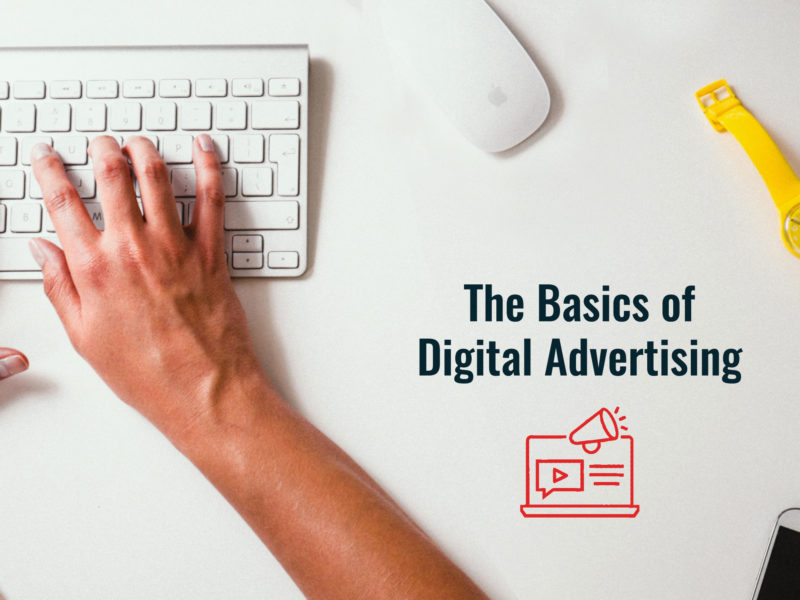
The Basics of Digital Advertising
Digital advertising has become an indispensable medium for marketing businesses of every size. The accessibility of the mobile platform lends itself beautifully to fast, effective and impactful advertising campaigns. Vantage offers Digital Marketing Services in Waterloo and with the number of startups flourishing in the area, we’ve seen first-hand the effectiveness of well-planned digital campaigns in getting our clients greater reach, establishing brand presence and sometimes, occasionally even in on-boarding investors who have been keeping an eye on their work online.
Today, 9 out of 10 users are exposed to online advertising – many of whom actively seek out such content. In fact, multiple studies have indicated that nearly 95% of Google’s revenue comes from online advertising.
As a business owner, if you have an online presence, you may already know how challenging it can be to maintain an engaged audience online. This is especially true if you are new to the digital marketing game!
Below, we have outlined the basic types of digital advertising that are commonly used by marketers.
Display Advertising
Display ads are the original form of digital advertising. Before there were social media networks and push notifications, there were display advertisements. A display ad generally appears on third party websites that are related to the content or service being advertised. Online display ads include any ad that can appear on a web page. Unlike the early days of the internet, today we have a variety of display ad formats to attract potential buyers. Display ads can be created as static images, floating banners,texts, flash, pop-up ads and even wallpapers. Costs for display ads are often based on Cost Per Thousand Impressions (CPM) or more accurately “cost per mille”. An impression is created when someone views the ad once.
Social Media Advertising
Social media advertising is a form of online advertising that can be done by utilizing social networking sites. The major benefit of using social networking sites is that advertisers can take advantage of the user’s demographic information and target their ads appropriately to a niche audience. Today, there are dozens of social media platforms – each with its own format for communication and advertisements. The most popular ones time Facebook, Instagram, LinkedIn, Snapchat, Pinterest and Twitter have unique posting formats for social sharing content. Most ads on social media websites appear as sponsored posts and can contain text, images, or video.
Search Engine Marketing
Another form of digital advertising is called Search Engine Marketing (SEM) and uses paid advertisements that appear on search engine results pages (SERP). With search engine marketing, advertisers bid on keywords that are frequently used by people searching for particular types of product or services. Search engine marketing provides advertisers with opportunities to showcase the products or services they represent alongside relevant search results.
Such ads are also known as pay-per-click ads and can appear in a variety of formats. Search engine advertising is chargeable on a ‘per-click’ basis. The only major difference between search engine marketing and organic search engine marketing is that paid search marketing will guarantee a first-page result, whereas organic searches need a lot more effort in order to start listing on the first page.
Email Advertising
Email Advertising describes the process of sending a commercial message to a group of people (usually those who have subscribed to your newsletter) via e-mails. In fact, the first widely publicized example of online advertising was conducted through electronic mail. In the heydey of internet marketing, advertising via email was not taken as seriously as it is today. These days, email advertising provides an array of options from transaction mail to direct mail to mobile email marketing. Think of it this way: if opt-in email advertising is used, the material that is emailed to consumers will be “anticipated.” By and large, opt-in email advertisements are more personal and relevant to the consumer than non-targeted advertisements.
Video
Video advertising has bloomed in the past five years, becoming one of the most popular and cost effective forms of digital advertising. The major reason behind the popularity of video advertising is because online video ads are easily measurable, cost effective and visually powerful.
Most video hosting websites have also evolved to offer multiple types of online display ads in addition to video-specific advertising such as video ads, bumper ads and overlay Ads. Keep in mind that video ads run alongside creative video content and can sometimes be just as entertaining. These video commercials can be inserted before, during, or after the main video. There is one drawback – long video ads may frustrate the audience and damage your brand reputation.
Mobile Advertising
According to Statista.com, 95% of mobile internet users look up local information on their phones for the purpose of calling or visiting a business.
Wireless and mobile
Technology allows advertisers to identify the user’s current location, send push notifications and craft targeted messages based on analytics. In fact, hyperlocal targeting is easy to implement using mobile devices. Hyperlocal marketing is a great vehicle to assist marketers in their quest to market specific services to customers in a targeted geographic location. Mobile ads range from click to download ads, click to call ads to push notifications and image to text and banner ads.
The current industry convention is to use cross-channel marketing to publish content and advertising across different digital channels. This approach coupled with offline integration can be incredibly effective for brands seeking to increase their overall reach.
